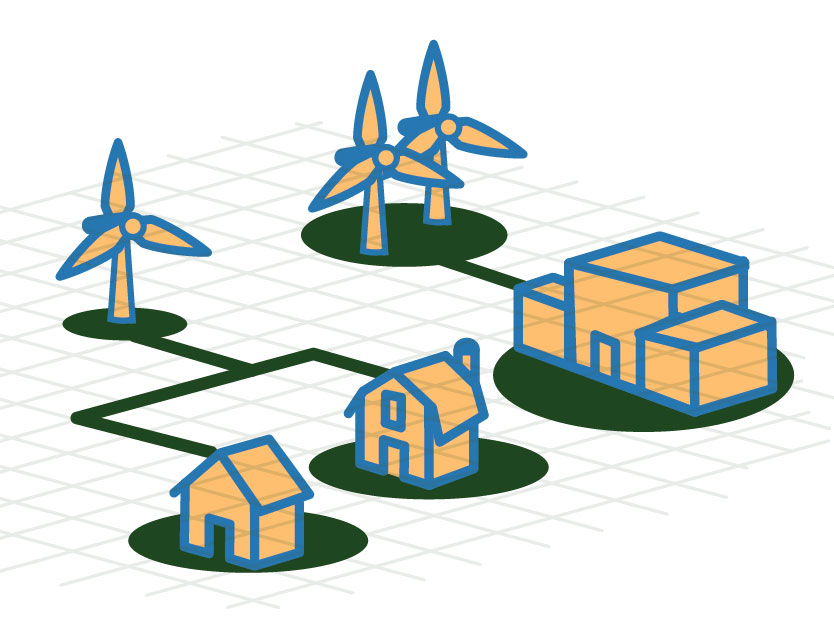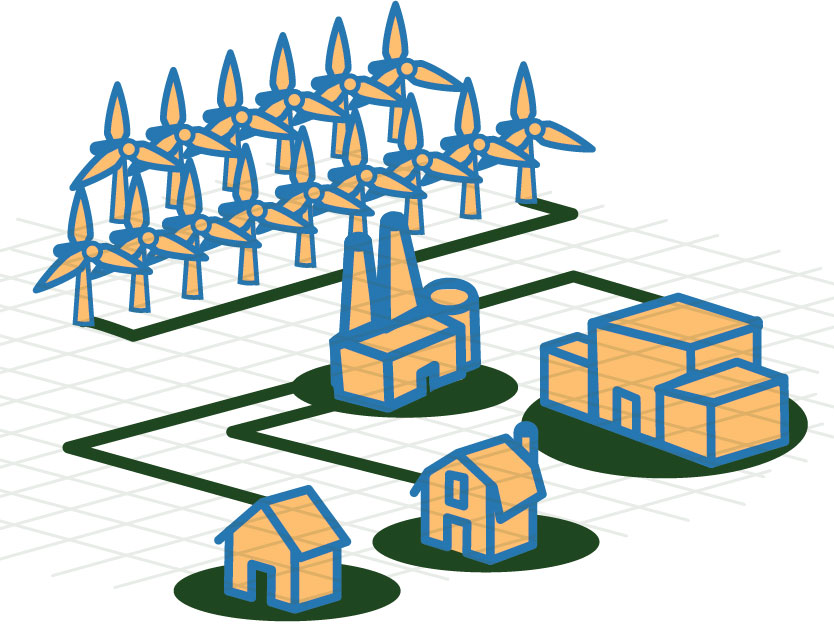Wind turbines harness the kinetic energy in the wind and convert it into other useful forms of energy such as electric power. Wind power has developed rapidly over recent years and as project development continues to expand, technology costs and wind energy prices have continued to fall. Modern wind turbines are a mature technology that can be installed to fit a wide range of applications, including community-scale power distribution, offsetting local power demand, or utility-scale power production for sale to electric utility companies.
Types of Wind
-

Distributed Generation
Distributed generation is the production of electricity at a location situated near the actual load demand. Through the use of net energy metering, a small wind turbine distributing electricity directly to the load demand, behind the meter, can offset a portion of the electrical load while allowing uninterrupted access to electricity when the system is not active. Systems that generate more energy than is being used may be able to take advantage of net excess generation benefits, where excess energy can be sold back to the electric utility, depending on local and state policies. The economic viability of distributed wind systems is highly dependent on the local electricity prices and net energy metering regulations.
-

Utility-Scale Generation
Utility-scale wind power plants typically consist of multiple large turbines connected directly to the utility grid. Electricity generated by utility-scale systems is sold in spot markets or to wholesale buyers who then sell the electric energy to utilities, rather than being used to directly offset a local load. Utility-scale wind farms require several acres of open land, depending on the number and size of turbines to be installed. Tribal nations can generate revenue from utility-scale wind power projects through land lease royalties or through power sales agreements, all while supporting regional renewable energy initiatives.
What You Need
For wind projects to be viable for Tribes, the following characteristics and circumstances must generally be present:
- Tracts of land with adequate wind resources, ideally measured over two or more years for wind speed and consistency at the potential site.
- Community support and engagement, specifically for visual impacts of utility scale projects.
- Few environmental sensitivities, such as avian migration and endangered species.
- Right-of-way access to individual turbine sites. Access to electric infrastructure and power purchase markets.
- Favorable regulatory framework, specifically local net metering policies for distributed generation projects.
Services for Wind
The Division of Energy and Mineral Development provides project assistance to Tribes and individuals to develop wind on their trust land. Learn more about how we can help below.
Additional Information
Additional Resources
Contact Us
Lakewood, CO 80401-3142


